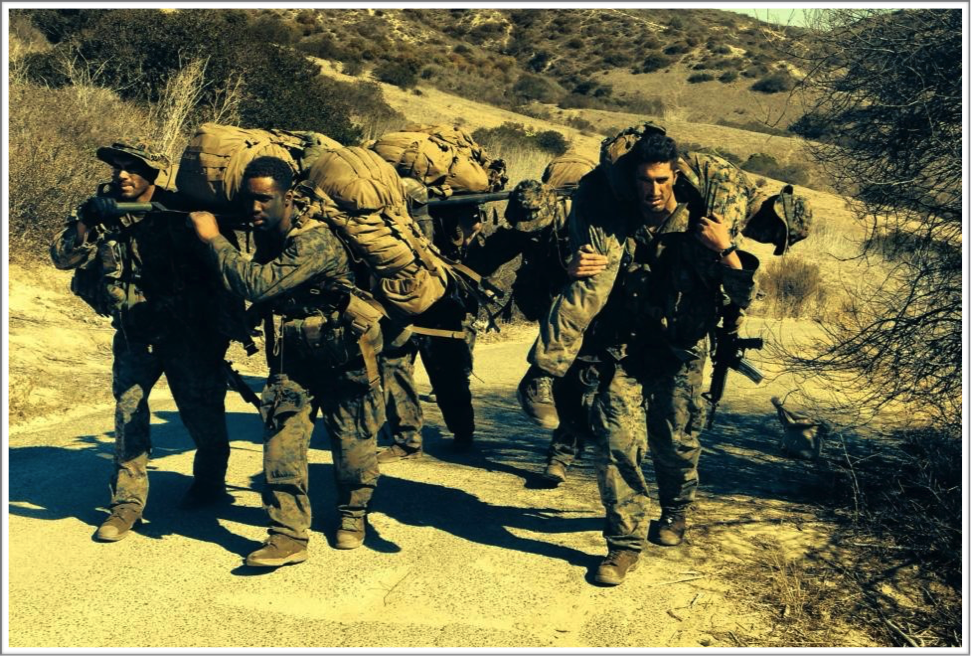Endurance and Intensity aren't usually trained simultaneously. I have been spending a lot of time brainstorming how to better program them together as a whole to enhance performance and longevity of an athlete. Let’s first go over the 4-Ms that we teach here at SOFLETE in regards to good movement being the foundation to everything we do in our daily lives.

Movement Pattern + Movement Quality + Movement Efficiency = Movement Variability
As time goes on, we tend to see a lot of these things break down not just in life but in the gym when we haven’t developed the proper adaptions as athletes. I will come back to the different adaptions here in a bit, but first; how does endurance come into play when looking at the 4-Ms?
Let’s first define endurance: “The ability to sustain a prolonged stressful effort or activity.”(Merriam-Websters,2018).
When I look at an athlete and how we need to create the appropriate steps in developing the 4-Ms, we must understand these movements are going to be used for prolonged periods depending what task is asked of them. For example: Let's take a sprinter. If the athlete is a 400-meter sprinter the athlete needs for that movement of running will be centered around the 100-400 meter run. Now if we were to ask that runner to go and complete a marathon the runner's endurance will tend to break down as the distance increases due to form decay and undeveloped endurance over a prolonged period.
Now, let’s take a look at the definition of intensity: “extreme degree of strength, force, energy, or feeling.”(Merriam-Websters,2018).
This time we'll use a quarterback as an example. They are throwing the ball 60% of the game, they are doing long passes and short passes. When I look at this athlete, the question is where are they breaking down? Is it the ability to endure the high percentage of throws throughout the four quarters or is it the ability to consistently replicate movement patterns that keep movement variability low throughout the four quarters, play after play. Athletes that demonstrate quality movement through extended period of performance demonstrate that we can use the two interchangeable and not separate the two as we have seen in a lot of movement and training programs. Being able to tie them together isn’t just about adding more volume, gamifying training, or developing specific testing protocols. We must be able to look deeper into the athlete. Developing this kind of performance requires programming for the 3-Adaptions below.
Nervous System Adaption + Muscular System Adaptation + Emotional System Adaptions = Intensity and Endurance
When I made the switch over to the endurance world last summer, I was coming from a background of pure strength and higher intensity functional fitness. My emotional system was completely neglected. What I had to learn was how to elicit adaptions to handle this new venture I was getting into. Which lead me down the rabbit hole to understanding the 3-Adaptions above.
The first step I had to do was lower the tension in my nervous system that came from being such a power focused athlete and the other constant stressors in my life. I then had to relearn how to move correctly when it came to running, biking, and swimming. As my movement developed I quickly realized that I needed to learn how to develop proper breathing mechanics. The lowered effort in my movement and breathing allowed me to see great reductions in the stress training put on my body, and as time went on I also notice lowered overall life stress. The efforts I was putting into form and breathing resulted in me feeling much less anaerobic stress in my training, and left me enjoying my endurance training instead of suffering through it.
The next step required a focus on the muscular system. As I started to see the changes in my nervous system that kept me out of a para-sympathetic state I would have uncontrollable tightness in areas of my body under load when I was doing strength and high-intensity workouts. This then put a limit to what I was able to endure and what intensity I was applying. When I started to blend in movement pattern, quality, and efficiency I was able to see the improvements in my movement variability. This greatly enhanced my recovery between sets and training sessions. I was able to endure longer and was maintaining a higher-level of intensity during my strength and endurance sessions than ever before.

You are probably asking, "Well George, how do I do this?" The answer is simple: applying simple progressions in a low-stress environment that then transfer over to higher stress environments. Pre-hab breathing work, focused accessory work, and longer cool-down sessions implementing movement and targeted stretching. The same thing will apply with endurance work, improving swimming and running but making the process feel more natural.
The third step will be the hardest, as it is developing your emotional system. I started to notice that I was more aware of my mind and body as a whole. this kind of awareness will allow you to develop fine motor skills you may not have been able to develop before. You should feel more resilience from stress in all areas of life, not just in training. This kind of focus on your feelings and emotions will eliminate a lot of previously wasted bandwidth and help you turn complex stressors into more simple ones. But, doing meditation a self-work certainly has a payoff. Don't stress about your journey, because this will be different for everyone.
I believe that being able to have control of these three adaptions have lead to a new way of thinking in how I develop training programs and how my athletes should approach life. It is my hope that this will promote overall longevity by allowing endurance through higher levels of intensity, facilitating cleaner movement over longer periods of effort, maintaining and developing strength, and becoming more in tune with who we are emotionally. If that doesn't lead to living a better life, I can't think of anything that will.
This past year our programs have reflected this new approach to training. We are big believers that our training in the gym or outdoors, should enhance our lives. We train to endure higher levels of intensity that come in life, not just in training.
Die Living!
[training-ad]





Leave a comment
This site is protected by hCaptcha and the hCaptcha Privacy Policy and Terms of Service apply.